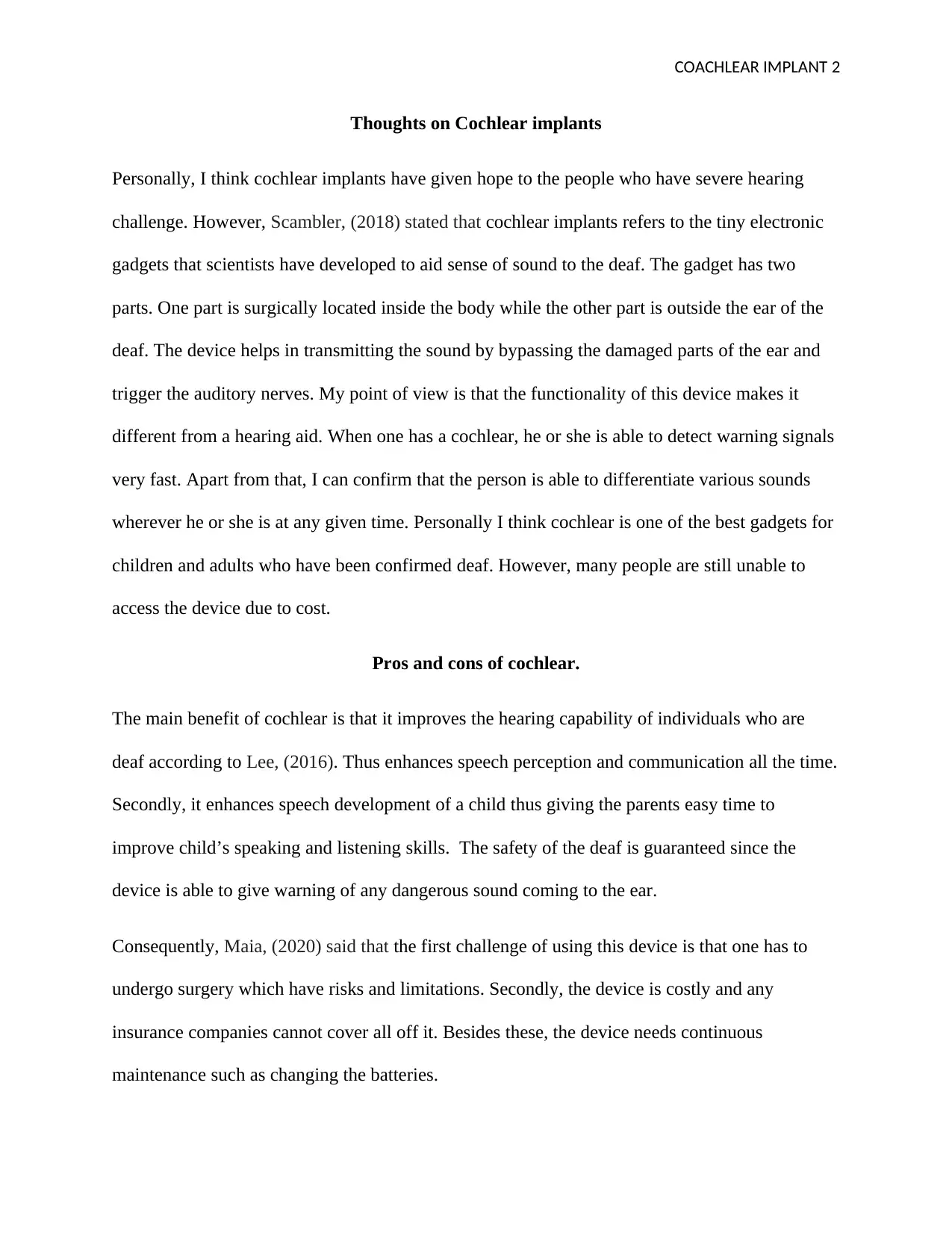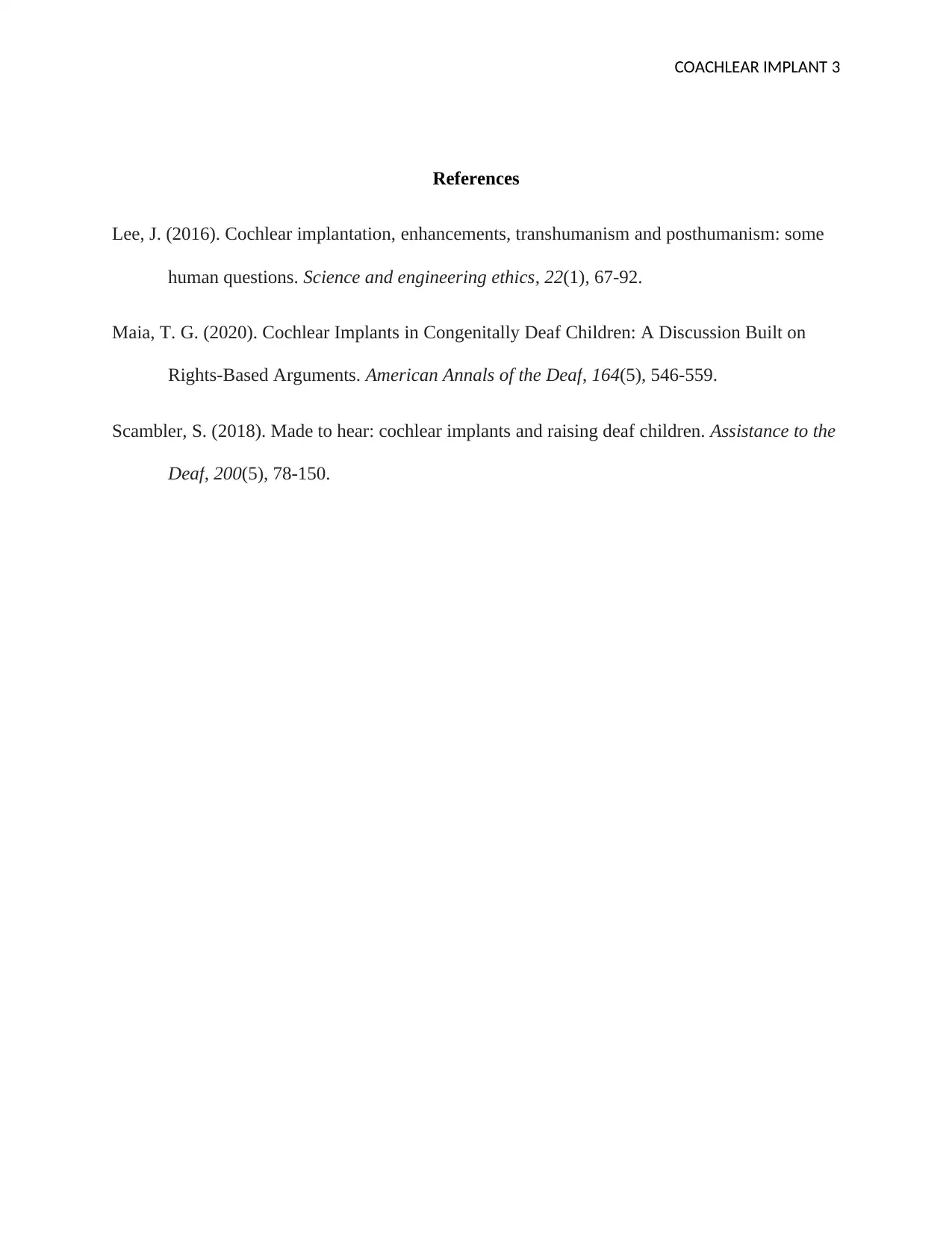Cochlear Implants: Exploring Benefits and Challenges in Healthcare
VerifiedAdded on 2022/08/22
|3
|462
|19
Report
AI Summary
This report examines cochlear implants, discussing their benefits and challenges. The author highlights the positive impact of cochlear implants on individuals with hearing loss, emphasizing improved hearing and communication capabilities. The report acknowledges the role of cochlear implants in speech development, particularly in children. However, it also addresses the challenges, including the need for surgery, the high cost of the device, and ongoing maintenance requirements such as battery changes. References to relevant literature, including works by Lee (2016), Maia (2020), and Scambler (2018), are included to support the discussion. The report concludes by underscoring the importance of understanding both the advantages and disadvantages of cochlear implants in modern healthcare.
1 out of 3







![[object Object]](/_next/static/media/star-bottom.7253800d.svg)